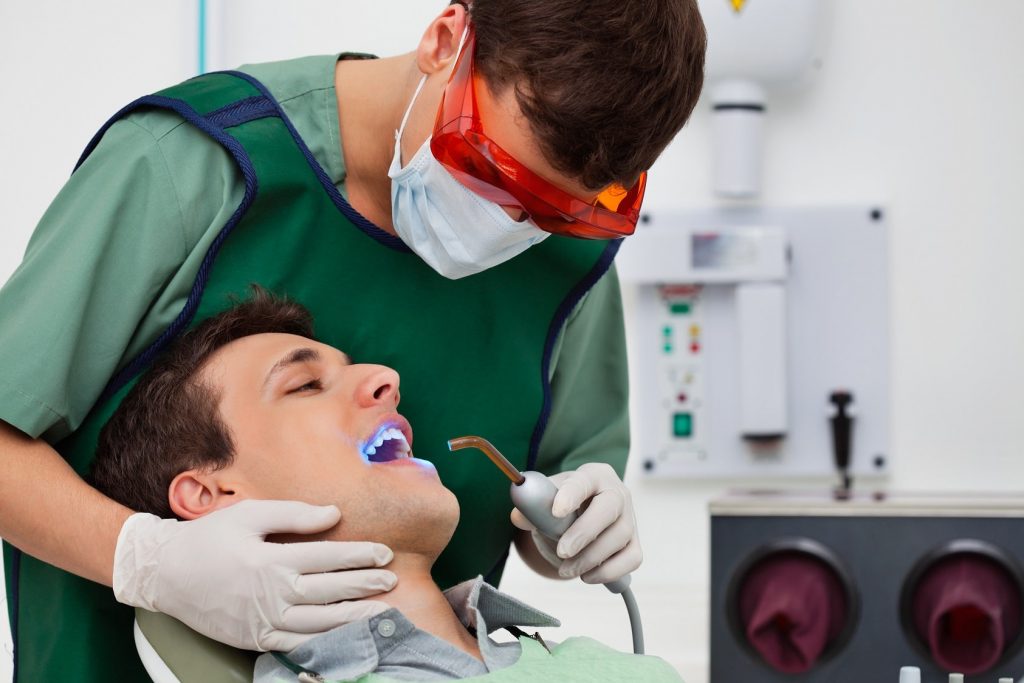Dental Sealants
Great improvements in the field of restorative dentistry have allowed for the repair and replacement of teeth that are suffering from all sorts of conditions, and this can be wonderfully helpful for individuals who have damaged teeth and need a way to restore proper oral function and structure. However, it is far more ideal for teeth to remain undamaged through preventative measures–such as through the use of dental sealants.

The Benefits of Dental Sealants
Dental sealants are plastic coatings that are used to seal the chewing surface of permanent back teeth in order to protect them from decay. When decay does occur in the mouth, it often occurs on these permanent back teeth. This is because there are grooves in the chewing surfaces of these teeth that can trap food particles and plaque, and simultaneously prevent easy cleaning from occurring. Some of the grooves are deep, but so narrow that even a single toothbrush bristle cannot access them.
Plaque is filled with acid-producing bacteria that can attack tooth enamel and create cavities. This is why it is so important to thoroughly remove plaque from all surfaces of the teeth as much as possible. However, even the best brushing and flossing techniques may be unable to remove every bit of plaque that is accumulating in the grooves on the back chewing teeth. Dental sealants create a protective barrier over these grooves, preventing plaque from entering them.
Receiving Dental Sealants
Receiving dental sealants is a fast, easy and painless process. Dentists normally recommend that dental sealants be applied to the first permanent molar as soon as the chewing surface erupts beyond the gum. While sealants are normally only placed on the back, chewing teeth, they may sometimes be recommended for use on other permanent teeth if they have deep pits or grooves and can benefit from this protection. In very rare cases they may also be recommended on primary teeth.
Dental sealants are normally clear, though they may sometimes be white or even slightly tinted. In order to place a dental sealant, your dentist will:
- Clean the surfaces of the tooth using a special paste and rotating brush. This helps to ensure that the tooth is entirely clean, and nothing that can cause decay or other damage will be trapped under the sealant and against the surface of the tooth.
- Rinse the surfaces of the tooth with water in order to ensure they are entirely clean.
- Dry the surfaces of the tooth.
- Place an acidic solution on the chewing surface of the tooth for a very specific amount of time–usually just a few seconds. This acidic solution creates a rougher surface on the tooth in order to allow the sealant to better adhere to the tooth.
- Rinse the acidic solution off the tooth.
- Thoroughly dry the tooth.
- Place the liquid dental sealant on the chewing surface of the tooth.
- Cure the dental sealant. Liquid dental sealant can be cured, or hardened, through the use of a special dental light.
- Check the sealant and the bite in order to ensure that the sealant properly coats the chewing surface of the tooth and does not interfere with normal bite.
Provided that teeth are properly cared for through twice daily brushing, once daily flossing and twice yearly dental examinations and cleanings, the sealants that are placed on the chewing surfaces of back teeth can last for many years. When it becomes necessary, dental sealants can be replaced in order to continue providing teeth with stellar protection against food particles, bacteria and cavities.
To learn more about dental sealants and whether they are appropriate for you, contact Dr. Nurminsky today.
